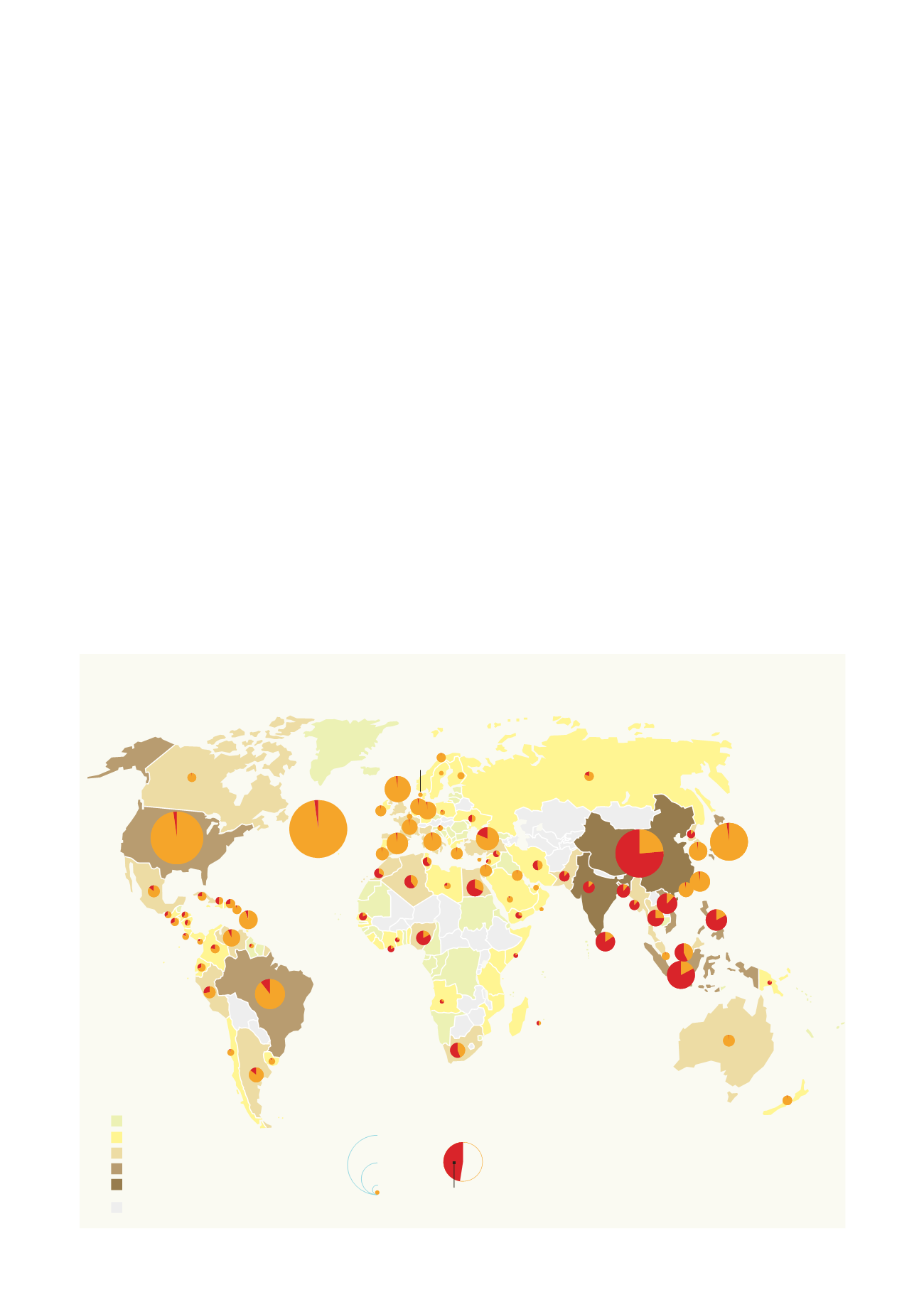

10
Marine Litter
Vital Graphics
Today´s deterioration of the global environment is closely linked to unsustainable
patterns of consumption and production. The exponential increase in production and
consumption over the last 50 years has seen a rapid transformation of the relationship
betweenhumans and thenatural world–more so than inanyother period inour history
–with escalating use of natural resources leading to environmental degradation (UNEP,
2015). The increase in production and consumption is across all sectors and generates
a vast amount of waste, much of it contributing to marine litter. This includes waste
streams such as wood, textiles, metal, glass, ceramics, rubber and above all, plastic.
DRIVERS
The rapid rise in the use of oil and gas during the last
half century has been accompanied by the development
of a range of petroleum products, some of which, like
petrochemicals, have other important applications
beyond energy production. The global production of
petroleum-derived plastic has also increased dramatically,
from 1.5 million tonnes in 1950 to more than 300 million
tonnes in 2014 (Plastics Europe, 2015; Velis, 2014). Some
people have described this dramatic increase in the use
of plastics as the “Age of Plastics” (Stevens, 2002) or “Our
Plastic Age” (Thompson et al., 2009). If the current trend
where production increases by approximately 5 per cent
a year continues, another 33 billion tonnes of plastic will
have accumulated around the planet by 2050 (Rochman
et al., 2013).
It is very easy to understand why the volume of global
plastics production has already exceeded that of steel in
the 1980s (Stevens, 2002). Plastics have a broad range of
characteristics that make them a good replacement for
Source: Jambeck, J., R., et al., Plastic waste inputs from land into the ocean, Science, 2015; Neumann B., et. al., Future Coastal Population Growth and Exposure to Sea-Level Rise and Coastal Flooding - A Global Assessment. PLoS ONE, 2015. Total plastic waste produced Portion of plastic waste mismanaged Trinidad and Tobago United States Cyprus Oman Angola Denmark Papua New Guinea Mauritius Sweden Guyana Ghana Poland Somalia Lebanon Belgium UAE Croatia Panama Nicaragua Saudi Arabia Libya Uruguay Yemen Honduras Cote d'Ivoire Costa Rica Syria Chile Guatemala Finland Ukraine Haiti Senegal Singapore North Korea Ecuador El Salvador Cuba Tunisia Puerto Rico Colombia Canada Norway EU 27 plus Norway Dominican Republic Russian Federation Morocco New Zealand Iran Myanmar Pakistan Kuwait Ireland India Australia Greece Mexico Peru Israel Portugal Algeria Bangladesh Nigeria Argentina Hong Kong South Africa France Thailand Netherlands Egypt Venezuela Germany Italy Malaysia South Korea Sri Lanka Taiwan Vietnam Philippines Spain Turkey United Kingdom Indonesia Brazil Japan China Plastic waste produced and mismanaged Coastal population Plastic waste production Million people 1 to 2 Less than 1 2 to 10 10 to 50 50 to 263 Land locked country Thousand tonnes per day, 2010 37 10 1 0,2Modern times, marine litter


















